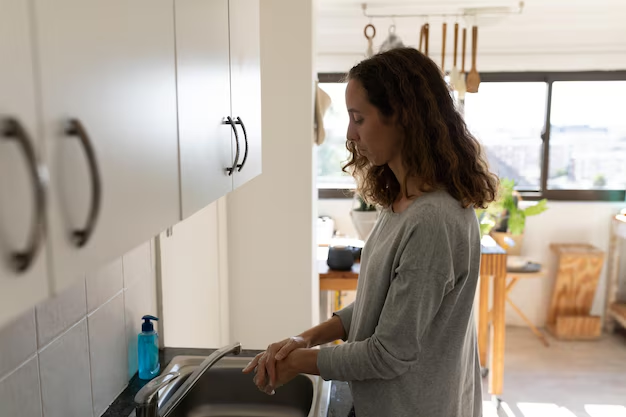How to Properly Reset Your Refrigerator: A Guide to Controls & Settings
Refrigerators are essential household appliances, quietly working behind the scenes to keep your food fresh and safe. But even the most reliable refrigerators occasionally need a reset. Whether it’s due to a power outage, a glitch, or a need to clear error codes, resetting your refrigerator can restore it to optimal functionality. In this guide, we'll explore how to reset your refrigerator, dive into related controls and settings, and offer tips for maintaining its performance.
Understanding When to Reset Your Refrigerator
Before jumping into the "how," it's crucial to understand the "why" and "when" of resetting your refrigerator. A reset can help address issues such as:
- Persistent Error Codes: Modern refrigerators are equipped with error codes that alert you to issues. If these persist despite troubleshooting, a reset may help.
- Strange Noises or Behaviors: An unusual hum or vibration, or doors not sealing properly, can sometimes be resolved with a reset.
- Temperature Fluctuations: If your fridge isn’t maintaining the proper temperature, a reset can recalibrate its settings.
- Following a Power Outage: A power loss can disrupt the settings, calling for a manual reset to align everything back.
Preparing to Reset: Safety and Precautions
Before resetting, consider these safety tips to ensure a successful and damage-free process:
- Unplug the Refrigerator: Always disconnect the power to avoid electrical shocks.
- Consult the Manual: Different models have varying reset procedures. The user manual can offer specific insights.
- Protect Stored Food: Transferring perishable items to a cool place can prevent spoilage during the reset.
How to Reset Your Refrigerator
General Reset Instructions
While specific instructions can vary by brand and model, here is a general approach to resetting most refrigerators:
- Unplug the Appliance: Disconnect the refrigerator from the power outlet.
- Wait for 5-10 Minutes: This allows the appliance’s systems to completely shut down and reset.
- Plug It Back In: Reconnect your refrigerator to the power source.
- Adjust Settings if Necessary: Once powered, check that temperatures and other settings align with your preferences.
Advanced Reset Techniques
Some refrigerators may have advanced electronic panels or smart technology. Here's how to handle them:
- Find the Reset Button: Some smart fridges have a dedicated reset button, often located inside near the control panel.
- Use the Control Panel: Navigate through the menu settings and look for a reset or restart option.
- Combination of Buttons: Certain brands require simultaneously pressing specific buttons, like pressing both the fridge and freezer buttons for a few seconds.
Resetting Specific Features
Ice Maker Reset:
- Locate the ice maker reset button within the ice compartment.
- Press and hold for 10 seconds until you hear a chime or feel a click.
Water Filter Light:
- After replacing a filter, reset the light by pressing the filter reset button or holding down the water filter button for 3 seconds.
Smart Fridge Settings:
- Use the control panel’s settings menu to reset WiFi or Bluetooth connectivity.
Exploring Related Controls & Settings
Apart from resetting, understanding your refrigerator's controls and settings can deepen your appliance mastery:
Temperature Settings
Ensuring your fridge operates within the ideal temperature range is key to maintaining food freshness:
- Refrigerators typically should be set between 37-40°F (3-4°C).
- Freezers should be set at 0°F (-18°C) for optimal ice and food storage.
Energy-Saving Modes
Explore energy-saving options to cut down on electricity consumption:
- ECO Mode: Some units offer a power-saving mode, adjusting internal temperatures while storing energy efficiently.
- Vacation Mode: Useful for longer periods away, keeping the freezer functioning while reducing the fridge's power use.
Child Lock Feature
Parents can prevent children from tampering with settings by engaging a lock usually activated via the control panel.
Display & Alerts
Modern refrigerators offer digital displays with alerts or alarms for:
- Open doors
- Maintenance reminders
- Temperature irregularities
Weekly Maintenance Checklist
To avoid frequent resets and ensure longevity, consider these maintenance steps:
- Clean Coils: Vacuum the coils at the back or underneath every 6 months.
- Defrost: Regular defrosting prevents ice build-up in non-frost-free models.
- Replace Filters: Keep air and water filters in check every 6 months.
- Organize Contents: Avoid overcrowding to promote air circulation and maximize cooling efficiency.
Quick Summary of Refrigerator Reset Steps
Here's a handy summary of quick tips to keep in mind when resetting your refrigerator:
- 🛑 Safety First: Always unplug and follow model-specific guidance.
- ⏰ Wait It Out: Allow a few minutes for an effective reset.
- 🔧 Use Built-In Features: Leverage built-in reset buttons or control panel options.
- ✅ Final Checks: Verify settings and temperatures after powering back on.
Wrapping Up: The Importance of Regular Maintenance
Resetting your refrigerator can resolve many minor glitches, but preventive measures and understanding your appliance's settings often negate the need for resets altogether. Regular maintenance, paired with a good grasp of the controls and settings, extends the lifespan of your refrigerator and ensures its peak performance.
By keeping these guidelines in mind, you equip yourself with the knowledge to tackle minor issues independently, ensuring that your refrigerator remains a reliable kitchen companion for years to come.
